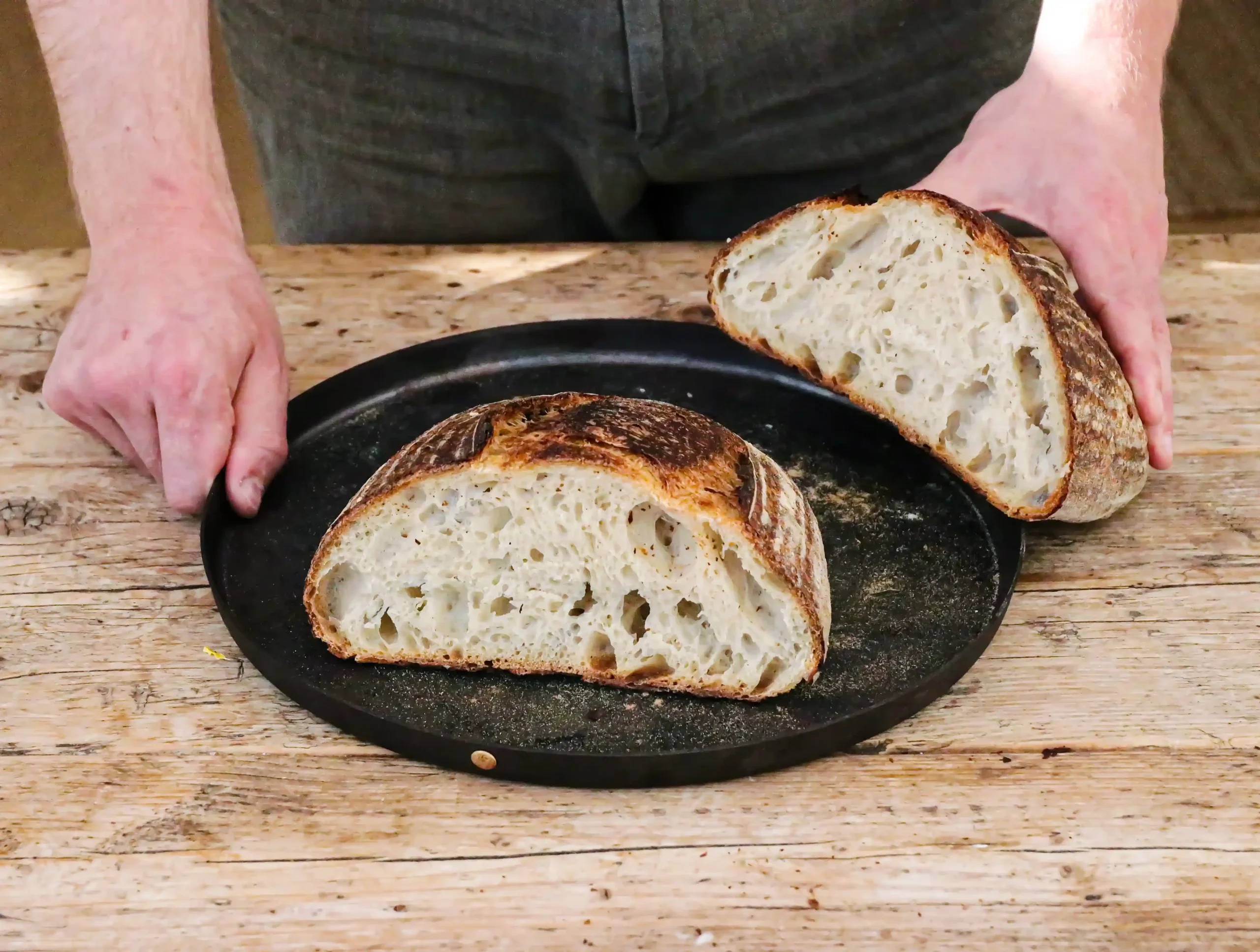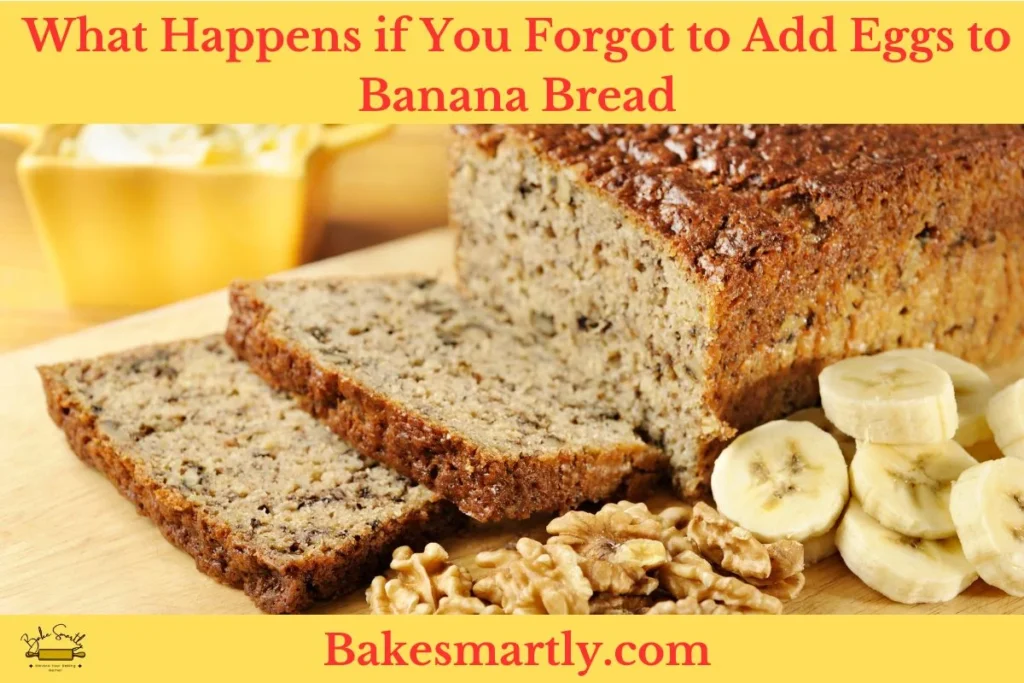
Troubleshooting Gummy Sourdough Bread: A Step-by-Step Guide
Have you ever baked a loaf of sourdough bread that turned out gummy and dense instead of light and airy? If so, you’re not alone. Gummy sourdough bread is a common issue that many home bakers face.
But fear not! in this detailed guide, we will explore why your sourdough bread might turn out gummy and offer practical solutions to help you achieve that ideal, chewy, and well-formed loaf.
Table of Contents
ToggleWhat is Gummy Sourdough Bread?
Gummy sourdough bread refers to bread that has a dense, rubbery, and chewy texture. Instead of a light and airy crumb with well-developed holes, the bread may feel undercooked and moist. This issue can be frustrating, especially after putting in the time and effort to cultivate a sourdough starter and go through the lengthy fermentation and baking process.
Now that we understand what gummy sourdough bread is, let’s delve into the common factors that can cause this frustrating issue.
Common Causes of Gummy Sourdough Bread
Gummy sourdough bread can be caused by several factors that home bakers commonly encounter. One of the primary culprits is insufficient fermentation time, where the dough hasn’t been allowed to ferment for a long enough duration to develop the desired texture and flavor. Another factor is overhydration of the dough, which can lead to excessive moisture and a gummy crumb.
Inadequate gluten development, often caused by insufficient kneading or mixing, can also contribute to the gummy texture.
Additionally, incorrect baking temperature and time, as well as improper cooling and storage, can further exacerbate the issue. By understanding and addressing these factors, you can troubleshoot gummy sourdough bread effectively and achieve the perfect loaf.
But what happens when your sourdough turns gummy? Let’s explore whether you can still eat it without discomfort.
Can You Eat Gummy Sourdough Bread
While gummy sourdough bread won’t harm you, it doesn’t give you the enjoyable eating experience you want. This unpleasant texture happens when the bread inside is heavy, wet, and too chewy, instead of being light and fluffy. Eating gummy sourdough can leave you with a dissatisfying, doughy feeling in your mouth and might even upset your stomach.
To avoid this problem, it’s important to figure out what’s going wrong in your bread-making process. Pay attention to things like not letting the dough ferment long enough, using the wrong amount of water, or not developing enough gluten.
By making the necessary changes, you can enjoy a delicious sourdough bread with a crispy crust that not only tastes great but also doesn’t bother your digestion.
Now that we’ve covered the effects of gummy bread, let’s move on to the practical steps you can take to troubleshoot and fix this problem.

Troubleshooting Steps for Gummy Sourdough Bread
To troubleshoot gummy sourdough bread effectively, follow these step-by-step instructions:
Step 1: Assess the Dough Texture
To begin troubleshooting gummy sourdough bread, start by carefully assessing the texture of the dough. A well-fermented dough should exhibit specific qualities that indicate proper development. As you touch the dough, it should feel elastic, displaying a gentle spring-back when pressed. The surface should be smooth, free from excessive stickiness.
A slightly tacky sensation is expected, but if the dough feels overly wet or sticky, it is a clear sign that adjustments are necessary.
Additionally, if the dough lacks elasticity and appears dense or heavy, it indicates that the fermentation process might need further attention. By evaluating the dough texture, you can gain valuable insights into the potential causes of gummy bread and take appropriate action.
Having assessed the dough texture, let’s now shift our focus to the next crucial step: checking the health of your sourdough starter
Step 2: Check the Starter
The health and vitality of your sourdough starter play a crucial role in achieving the desired texture in your bread. Take a moment to evaluate the condition of your starter.
A weak or underfed starter may not have enough leavening power to create the necessary structure, resulting in a gummy consistency. Regularly refreshing your starter is essential to maintain its strength. Before incorporating it into your dough, ensure that the starter is active and bubbly, indicating a thriving population of wild yeast and lactobacilli.
If the starter appears sluggish or inactive, consider adjusting the feeding schedule, providing it with adequate nourishment and time to develop its full potential. A healthy and robust starter is instrumental in producing well-structured and flavorful sourdough bread.
Step 3: Review the Fermentation Process
Carefully reviewing the fermentation process is a vital step in troubleshooting gummy sourdough bread. The fermentation stage allows the dough to develop its distinct flavor profile and structure. It is essential to allocate sufficient time for both the bulk fermentation and proofing stages, as this directly impacts the final outcome.
Adjust the duration based on various factors such as the ambient temperature and the activity of your sourdough starter. Cooler temperatures may require longer fermentation times, while warmer conditions may expedite the process.
By closely monitoring and adjusting the fermentation process, you can ensure that the dough is given ample time to develop the desired characteristics, resulting in a well-textured and flavorful loaf. With the fermentation process reviewed, it’s time to consider another pivotal factor – temperature, both during fermentation and proofing
Step 4: Consider the Temperature and Proofing
Temperature plays a crucial role in sourdough bread baking, particularly during the proofing stage. It is important to consider the impact of temperature on the fermentation process. Cooler temperatures slow down fermentation, while warmer temperatures accelerate it. It is essential to find the optimal temperature range that promotes the ideal rise and texture in your dough.
Lower temperatures can result in under proofed bread, leading to a gummy crumb, while higher temperatures may cause over proofing and a collapsed structure. By monitoring and adjusting the temperature during proofing, you can strike the right balance and achieve the desired texture and rise in your sourdough bread.
Step 5: Evaluate the Baking Process
When troubleshooting gummy sourdough bread, it’s crucial to thoroughly evaluate the baking process. Start by assessing the temperature accuracy of your oven. An oven that is too hot can cause the crust to set too quickly, preventing moisture from escaping and resulting in a gummy texture. Use an oven thermometer to ensure precise temperature control and make any necessary adjustments.
Additionally, consider the baking time recommended in your recipe. Under baking can leave the interior of the bread undercooked and gummy, while overbaking can lead to dryness. Follow the specified baking time closely, but also rely on visual cues such as a golden brown crust and a hollow sound when tapped to determine when your bread is perfectly baked.
Now that we’ve covered the baking process, let’s move on to the often underestimated steps of proper cooling and storage.
Step 6: Proper Cooling and Storage
Proper cooling and storage techniques are crucial to prevent gummy sourdough bread. Once your bread is baked, resist the temptation to seal it in a plastic bag while it is still warm. This can create a moist environment, trapping excess moisture and resulting in a gummy texture. Instead, transfer the loaf to a wire rack and allow it to cool completely. Cooling on a wire rack promotes air circulation and helps maintain the desired crustiness.
For storage, avoid using plastic bags or airtight containers. These can lead to moisture buildup and compromise the texture of your bread. Instead, opt for a paper bag or a bread box, which allow for better airflow and help preserve the crust. By implementing proper cooling and storage practices, you can maintain the ideal texture of your sourdough bread and prevent it from becoming gummy.
Step 7: Experiment with Flour and Hydration Levels
Exploring different flours and adjusting the hydration level is a key step in troubleshooting gummy sourdough bread. The type of flour used and the amount of water added significantly impact the texture and structure of the final loaf. Embrace experimentation by trying various flours such as all-purpose, bread flour, or whole wheat, and observe how they affect the crumb texture.
Additionally, adjusting the hydration level can fine-tune the balance between moisture and structure. Gradually implement changes to avoid drastic variations, allowing you to find the perfect combination of flour and hydration that yields a moist, well-structured, and non-gummy sourdough bread.
Step 8: Adjust the Sourdough Feeding Schedule
If your sourdough starter lacks activity or strength, it may be necessary to adjust its feeding schedule. Increasing the frequency of feedings or modifying the flour-to-water ratio can enhance the overall performance of your starter, resulting in better outcomes in your bread.
A more active starter contributes to a stronger leavening power, which helps achieve proper fermentation and a well-risen loaf. Experiment with different feeding intervals and observe the behavior of your starter. By fine-tuning the feeding schedule, you can ensure that your starter is healthy, vibrant, and ready to impart its optimal leavening abilities, leading to a lighter, less gummy sourdough bread.
Step 9: Use Quality Ingredients
The quality of ingredients you use in your sourdough bread can significantly impact both its texture and taste. Ensure that you’re utilizing high-quality flour and water to achieve the best possible results. opt for organic or artisan flours, which tend to have higher protein content and better flavor profiles.
These flours provide the necessary structure and contribute to a more desirable crumb texture. Additionally, using filtered or purified water helps eliminate any potential contaminants that could affect the fermentation process. By investing in quality ingredients, you set the foundation for creating a delicious and well-textured loaf of sourdough bread.
Step 10: Practice Patience and Persistence
Baking sourdough bread is an art that requires both patience and persistence. It’s essential not to become disheartened by a few unsuccessful attempts. Instead, view each baking experience as a valuable learning opportunity. Understand that achieving the perfect loaf takes practice and refinement of your technique.
Pay attention to the details, make necessary adjustments based on your observations, and remain persistent in your pursuit of mastery.
Whether it’s adjusting fermentation times, fine-tuning baking temperatures, or experimenting with different techniques, each step brings you closer to achieving your desired results. Embrace the journey, learn from every outcome, and keep practicing until you produce a beautifully textured and flavorful loaf of sourdough bread.
Frequently Asked Questions About Sourdough Bread Troubleshooting
How can I tell if my sourdough dough is under proofed or over proofed?
Under proofed dough will be dense and lack volume, while over proofed dough will have a collapsed or flat appearance. The dough should be properly fermented, slightly tacky, and elastic before shaping and baking.
How long does it take to get a good sourdough starter?
Developing a good sourdough starter can take around one to two weeks. It requires regular feedings and discards to build up the yeast and bacteria populations necessary for proper fermentation.
Why is my sourdough bread gummy?
Gummy sourdough bread can be caused by factors such as insufficient fermentation time, overhydration of the dough, inadequate gluten development, incorrect baking temperature and time, or improper cooling and storage. Follow the troubleshooting steps in this guide to identify and fix the issue.
Can I salvage gummy sourdough bread?
It is challenging to salvage gummy sourdough bread once it has been baked. Prevention is key, so make sure to follow the troubleshooting steps outlined in this guide to avoid the issue.
Can I add more flour to fix gummy dough?
Adding more flour to already mixed dough may disrupt the hydration and gluten development, leading to further issues. It is best to adjust the dough hydration during the mixing process or experiment with different flour types in future bakes.
To improve your sourdough baking skills, it’s important to understand the fermentation process. Flour, water, yeast, and bacteria interact to create the unique flavor, texture, and aroma of sourdough bread. Learning about fermentation helps troubleshoot issues like sticky dough and enhances your baking.
Our article “5 Reasons Why Your Sourdough is Sticking to Everything” explains sticky dough causes and offers practical tips. Mastering the science of sourdough fermentation and using proper techniques will make you an expert sourdough baker.
Conclusion | Enjoy Your Perfect Sourdough Bread!
Gummy sourdough bread can be a frustrating issue, but with the right troubleshooting steps, you can overcome it and create delicious, well-textured loaves.
By carefully assessing the dough texture, checking the starter, reviewing the fermentation process, considering temperature and proofing, evaluating the baking process, practicing proper cooling and storage, experimenting with flour and hydration, adjusting the sourdough feeding schedule, and using quality ingredients, you’ll be well on your way to baking sourdough bread with a perfect crumb.
Lindsey Mackenzie
About me
Hi there! I’m Lindsey Mackenzie, the founder of Bake Smartly. Baking has been my passion since childhood, growing up in my father’s bakery. With Bake Smartly, I’m excited to share my love for all things sweet and savory. Join me on this delicious journey as we whip up scrumptious treats and sprinkle joy into every bite!






